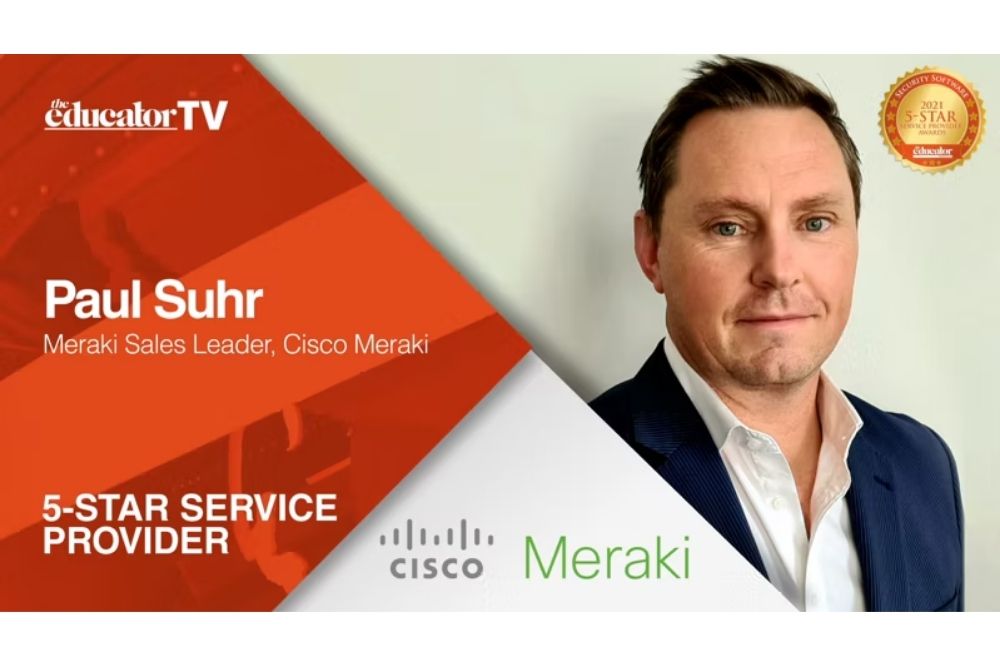
The pandemic has accelerated schools’ adaptation to new learning models, and educators face the challenge of using technology for learning continuity in a disrupted environment. Paul Suhr, product specialist at Cisco Meraki, says this calls for a simplified network structure that can deliver the benefits of traditional networks while ensuring the effective use of resources.
“More than ever, technology is being called upon to give [schools the] ability to provide learning. And if anything, the pandemic is really [an opportunity] for schools to focus on their digital strategies and identify new ways to adapt to change. And being able to do this effectively across the network means that it cannot be overcomplicated. You know, simplicity is all about the necessity for our team managers to focus on more important challenges, to be able to deliver learning wherever the students may be located,” he says.
Considering this need, Cisco Meraki provides a cloud management dashboard that offers flexibility in managing schools’ IT resources. Apart from simplifying the management of devices connected to a school’s network – such as computers and mobile devices – another advantage of this technology is its ability to provide information to help school administrators deal with social distancing requirements. For example, Meraki can gather and report data related to people’s movement, mask wearing, and use of physical spaces so that school administrators can decide on how to apply social distancing measures, which are known to affect the social and emotional development of students.
Given the large number of devices used by both teachers and students today, and which are often connected to the same network, schools must also strengthen their defence against cybersecurity threats. Meraki helps maintain a secure connection to online resources and enables IT administrators to efficiently keep track of all the devices connected to the network, Suhr says.
“Monitoring the status of those devices for security patches and vulnerabilities is absolutely critical to maintain security within a learning environment. The ability to view and manage and control applications that are running on the network then gives the school the ability to reduce an attack surface area. So, the return to on-campus learning will mean that schools now need to be able to deliver secure and consistent learning, both on-premise and off-premise.”
As more schools use cloud-based platforms, educators also have to consider privacy and streamlined workloads for their staff. Meraki’s cloud-native platform addresses these issues by protecting school networks from data privacy breaches while making the work of IT administrators easier. In addition, by using advanced CCTV analytics such as heat mapping to monitor people’s movement, the Meraki platform can help students and educators return safely to their school communities.
“Security is embedded in everything that Meraki does [in] all parts of the network, whether it’s from a device to the students using to the way in which they connect to the network, right back to the way the IT manager runs the network. The Meraki cloud-managed platform dramatically simplifies the way in which an IT administrator rights manager can deliver a school’s infrastructure and really frees up their time to be focusing on the more important tasks that may be impacting them during this time of transition, whether it’s in remote or on-premise learning,” says Suhr.


